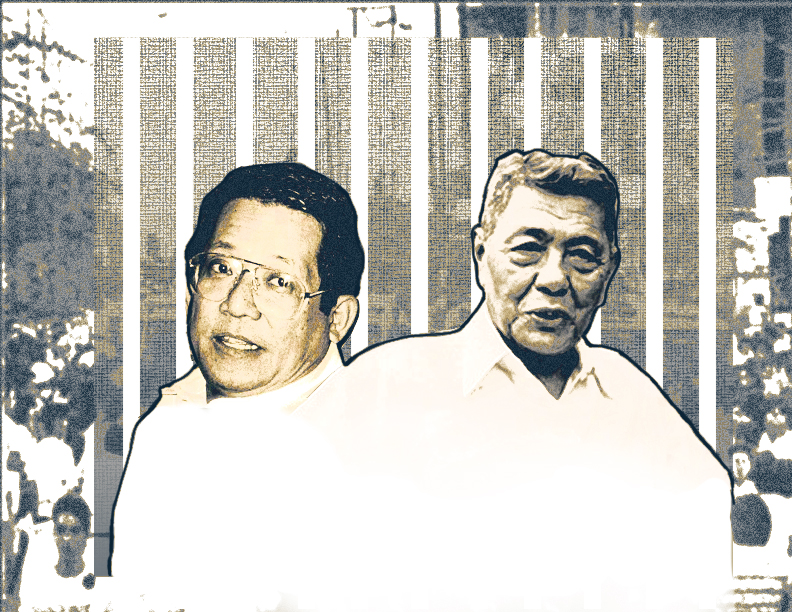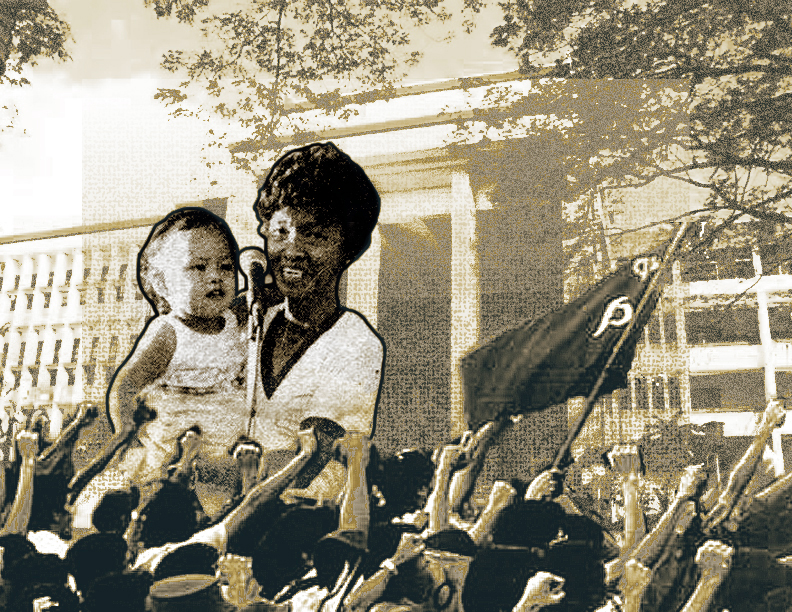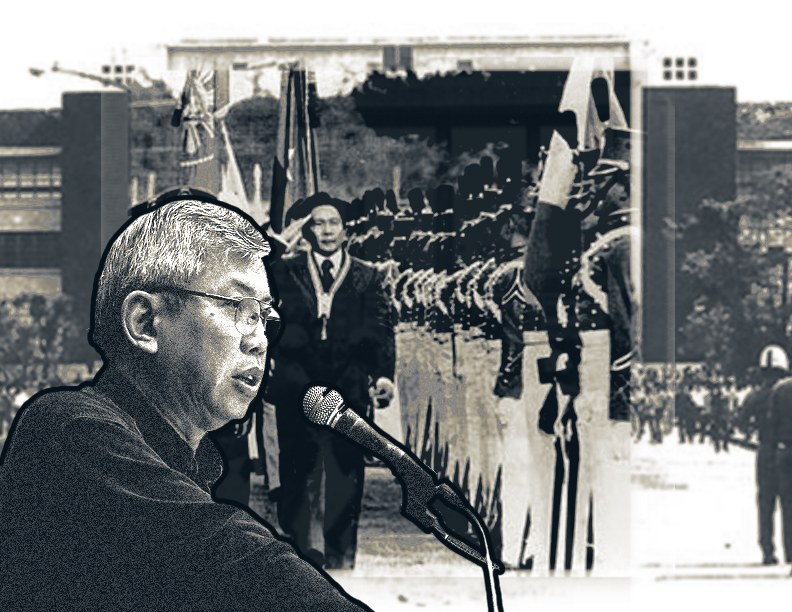
During the first five hours of the martial law regime, Filipinos were rapidly introduced to a new malevolent military institution, the like of which had not been seen since the establishment of the third Republic of the Philippines in 1946. I am referring to the construction of detention areas and to the illegal practice by the military of holding persons under custody, within the military reservations, for a period of time lasting anywhere from two weeks to two years-the maximum period being determined only by the age of the martial law declaration.
There are detention centers in practically all of the major provincial commands of the military. In certain areas, such centers proliferate, each managed by a major service of the military: army, navy, air force, constabulary, or even the newly integrated police. In the Greater Manila Area, the center of commercial and cultural activity of the country, and where the lavish pageantry of the Miss Universe ’74 contest was held, the most famous detention centers are the following: the Men’s Detention Center in the gymnasium of Camp Crame, the Women’s Detention Center, the PC Stockade, the Metrocom (Metropolitan Command) Detention Area, the CIS (Criminal Investigation Service) Detention Area-all within the military reservation of Camp Crame, headquarters of the Philippine Constabulary. In the army reservation of Fort Bonifacio, on the other hand, there is the catacombic Youth Rehabilitation Center (a misnomer) and the Ipil Reception Center (another misnomer. Within the reservation are also situated the maximum security prison cells where Senators Jose W. Diokno and Benigno Aquino are kept; those who have had occasion to partake of the hospitality of this place have given it its name-a name used even by the military: stalag one, two, three, depending on which cell block one receives his accommodations.

There are detention centers in Laguna and Pampanga, in Bicol, in the Visayas (specifically Cebu and Iloilo), as well as in Zamboanga, Cotabato, Davao and Jolo in Mindanao. A detention center, the Sampaguita, was recently inaugurated in Alabang, Laguna, just outside of Greater Manila. This is supposed to be for the exclusive use of those held under non-political offenses; however, names of political detainees, especially the intransigent ones, have found their way into the list of those transferred to this detention center.
I must emphasize that these are only the known detention centers. Others, less heard of, exist in Luzon, the Visayas and Mindanao. Aside from the detention centers proper, the military also maintains a number of private houses, called “safe houses,” paid for with unaudited intelligence funds. These houses are plush and they are intended primarily for housing those intelligence agents of the military working in a definite district or area. However, these houses also serve as effective hiding places for arrested persons whenever the military does not wish such persons traced by their relatives or friends. Because these “safe houses” are never officially acknowledged, no rules obtain within these premises as to the manner of treatment dealt out to arrested persons. Several instances of rape have been reported to have occurred within these “safe houses”; the victim or victims are released immediately once the sexual outrage has been accomplished. These victims were ostensibly taken in for questioning, but instead of handing them over to the proper military officers, the agents took them to the “safe houses” where they took turns abusing the women. The most notorious case of this kind was the rape of a Makibaka (a woman’s organization before martial law) girl raped by a team of intelligence agents, headed by the infamous Rey San Juan, a civilian employee of the Intelligence Service of the Armed Forces of the Philippines (ISAF).
Within the military reservations, there are also secret, unofficial detention centers-rooms usually within the smaller compounds of the intelligence services headquarters, where newly arrested persons are housed, allegedly for “tactical interrogation.” Among these are the quarters within the building of the Constabulary Security Unit (CSU) and the houses within the ISAF compound. The first is headed by the cold-blooded Col. Melendres and directly managed by Col. M. Aure, one of those plagued with paranoiac psychological fears of his family being harmed “by them”-a common enough syndrome among these types of officers. The second is supposedly under Gen. Paz; however, those who have gone through the ISAF detention center also mention a Major Arcega, a Col. Miranda and a Col. Mayo as the ones directly knowledgeable regarding the management of these centers.
Tactical interrogation includes the following: 1) holding the prisoner incommunicado for weeks or months, depending on the whims of the officers involved as well as the response of the individual to methods of interrogation; and 2) the dreaded “methods of interrogation.” The latter includes physical torture (beatings, plucking out the eyebrows hair and pubic hair one by one, pistol whippings, rifle butt blows, karate chops, kicks, burning of the flesh with cigarette butts and matches, burning the genitals of males with lighters), use of electric gadgets (electrodes attached to the genitals and nipples through which electric current is passed), and the use of drugs (the ISAF specializes in injections of sodium pentothal) without medical supervision. In the latter case, one old man appeared to have been given an overdose while inside the ISAF compound, as a result of which he was in stupor for three days. I have been told of cases where the minds of prisoners just disintegrated because of repeated doses of drugs given by the military; of those, however, I have no personal knowledge and would therefore limit myself to the case of this old man.
All these methods are intended to break down the “resistance” of prisoners, to make them willing to accede to the military’s demands for information on underground activities. In some cases, however, the arrested person does not really know anything and therefore has to suffer interminable torture. Women are not spared this treatment, as in the case of Judy Taguiwalo, a former student of the University of the Philippines. She was kept for weeks in an isolated provincial station where she was beaten up almost everyday, made to strip naked and sit on huge blocks of ice. This frail girl’s name appeared only in the formal list of detainees when the incident reached scandalous proportions. Noni Villaneuva, a former youth leader, suffered electrocutions in the ISAF compound, prior to his transfer to the “open” detention center of Ipil. Others, strangely enough, had their eyebrows tweezed off, hair by hair, or were given rifle butt blows on their ribs. Still others were methodically starved, or not allowed to sleep, or were stripped naked, after physical torture, anchored with leg irons and thrown into small rooms with cement floors with no mats or blankets to protect them from the evening cold or the mosquitoes. A few, because of the drugs employed, have lost their minds. Recently, the CSU put into practice a new form of torture: the arrested persons are given injections of morphine to force them into addiction and the drug is later withheld, in the hope that the anguish of withdrawal would force the prisoner into giving information. Receiving this kind of treatment to this time is Fidel Agcaoili, son of a prominent family in the Philippines and a graduate of an American university.

Still others who received their share of ill treatment in the hands of the military were Jose F. Lacaba, newsman and poet, who limped for three days afterwards and who passed out blood in his urine; Fernando D. Tayag, a former student of the University of the Philippines, who up to now is beaten up daily; Levy Balgos de la Cruz, playwright, whose front teeth were smashed by blows from fists and rifle butts and who was offered twenty pesos (about $2) by Col. Diaz as consolation. These are only a few of those who continue to suffer physical, chemical and psychological tamperings of their personalities. Some die from this brutal treatment, especially in the rural areas where the military rules absolutely, through naked terror and power.

Subtle psychological tortures are inflicted by those in the lower echelons of the military hierarchy upon prisoners. In the CSU, it has become usual among junior officers to hold a celebration whenever they have taken into custody a considered “prize catch.” These officers drink themselves to madness, cavort around their offices, with radios turned up as loudly as possible. Music coming from the offices reverberate through the rooms used as prisons and tension builds within these quarters, among the prisoners-for the latter know, by experience, that after the bacchanalia, the officers and guards will move into the detention quarters to beat up the prisoners. Even the lowliest guard plays with the prisoners. Since the toilets in this compound are situated outside the rooms of the prisoners, groups of five prisoners are marched out at five o’clock in the morning to the toilets where they defecate. Once there and while the prisoners are performing this bodily function, the guards start counting from one to ten and at the last number, whether finished or not, the prisoners are marched back to the detention quarters. Few are able to adjust to this petty form of interference in their physiological functions.





























